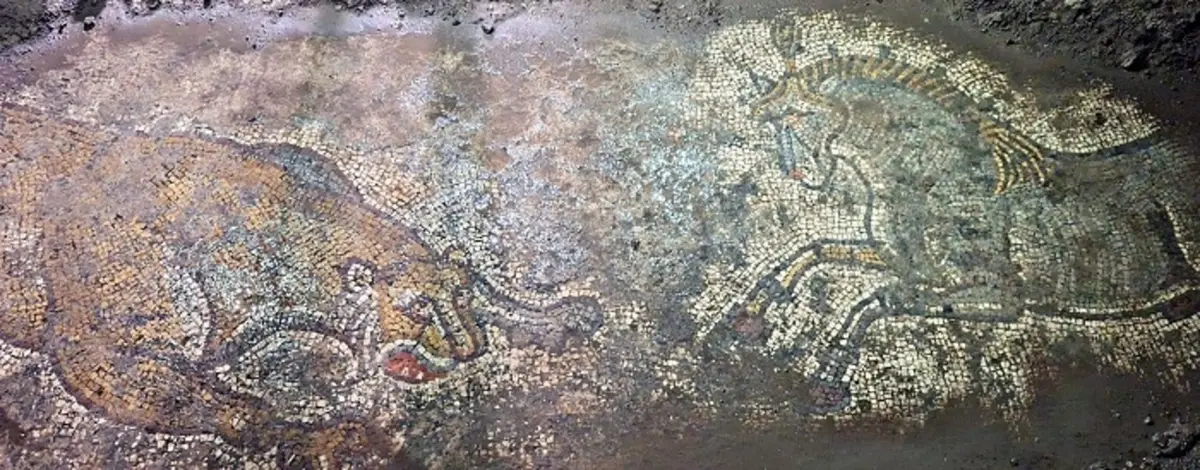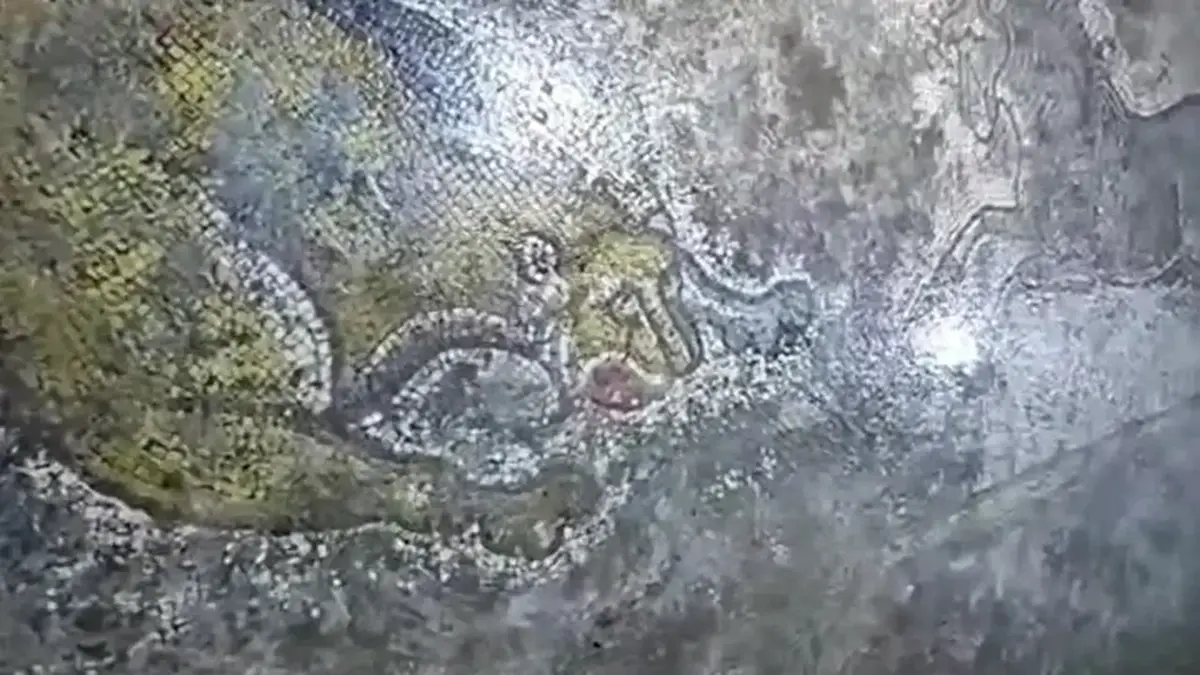 During an operation by the anti-smuggling and organized crime unit in the southeastern province of , authorities uncovered a 1,500-year-old mosaic featuring vibrant animal imagery. This late Roman floor mosaic, intentionally buried two meters deep, spans approximately 60 square meters. Experts have classified it as a rare example of Roman art from Ancient Mesopotamia.
During an operation by the anti-smuggling and organized crime unit in the southeastern province of , authorities uncovered a 1,500-year-old mosaic featuring vibrant animal imagery. This late Roman floor mosaic, intentionally buried two meters deep, spans approximately 60 square meters. Experts have classified it as a rare example of Roman art from Ancient Mesopotamia.
Law enforcement conducted a search of the garden belonging to a man suspected of hiding the artifact and stumbled upon this stunning piece of decorative art, concealed beneath a concrete slab. Smugglers were reportedly planning to sell the mosaic on the black market for antiques, according to the publication Arkeonews.
The recovered mosaic has been handed over to the Mardin Museum for conservation and further study.

What Makes This Mosaic Special?
Initial analysis indicates that the dates back to the late Roman period (4th to 6th century AD) and once adorned the floor of a prestigious building, possibly a villa or bath complex.
Art historians have described this piece as an extraordinary example of late Roman provincial mosaic art, characterized by depictions of natural motifs, particularly animals in dynamic motion, along with clear contour lines. The mosaic features two animals: a predator from the feline family engaged with a hoofed animal—either a horse or a deer.
Experts believe these images reflect the Roman fascination with strength, vitality, and the struggle between life and death. The color palette of the mosaic—ochre, red, white, and black—aligns with the traditions of regional workshops that operated in southern Anatolia and northern Syria. Additionally, the technique shows local characteristics, suggesting that Anatolian artisans influenced by Mediterranean artistic trends created the mosaic.
“The iconography and technique of the mosaic serve as a bridge between Roman naturalism and early Byzantine symbolism. This work allows us to see how art evolved at the crossroads of Mesopotamian cultures,” noted researchers from the Mardin Museum.
This discovery opens a new chapter in the art history of the region. Mardin thrived during Roman rule in the 4th to 6th centuries AD, serving as a key border zone connecting Anatolia with Syria and Mesopotamia. Artistic works from that era blended Christian and pagan influences.
The Turkish Ministry of Culture and Tourism, under which archaeologists are studying the mosaic, plans to publish scientific findings regarding the artifact in the coming months.
Researchers believe that the discovery of this mosaic significantly contributes to understanding late Roman artistic processes in the Mesopotamian borderlands. After restoration, this decorative masterpiece will be accessible to the public.
